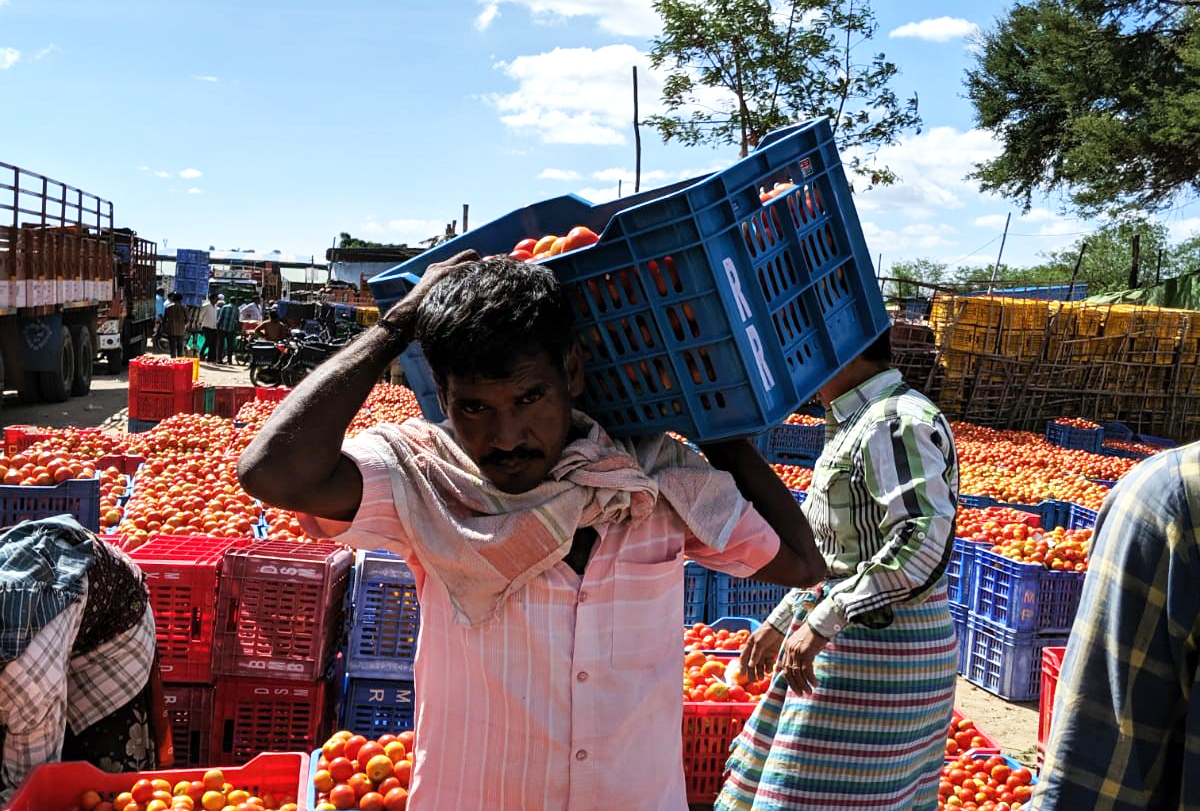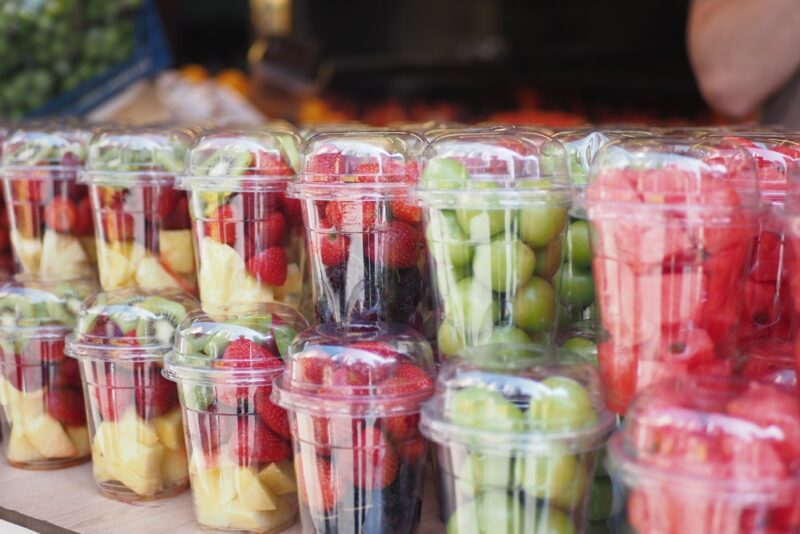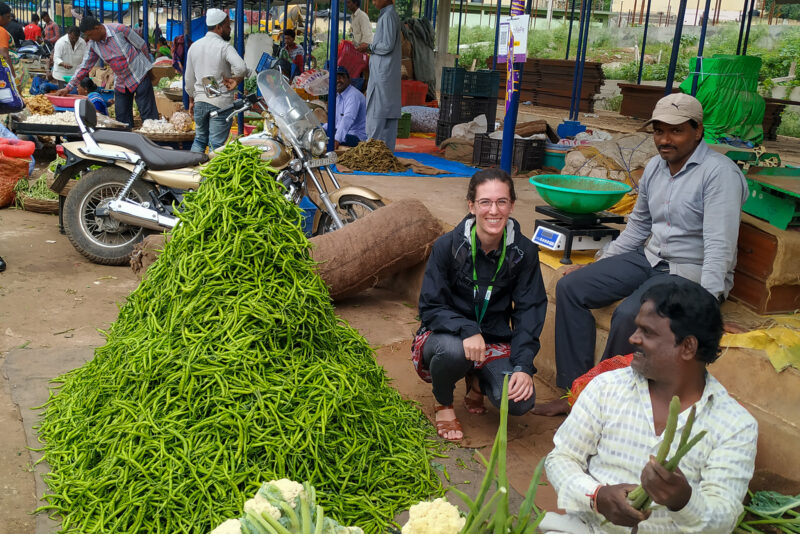Balancing Act: Trade-Offs Between Food Loss Reduction and Tomato Labor Drudgery

In this blog post, TCI scholar Jocelyn Boiteau explores how the plastic crates used to protect tomatoes at the market carry occupational risks for laborers.
In Andhra Pradesh’s bustling Madanapalle tomato market, where tomatoes are auctioned in bulk, the buzz of activity is periodically broken up by a crash of empty crates tossed to the ground. Men and women, hired laborers, bring empty plastic crates, six or eight at a time, to be filled with tomatoes. Once filled, each crate, weighing about 30 kgs or 66 lbs, will be picked up and loaded onto a truck by a single person.
Reusable plastic crates are thought to reduce food losses by protecting tomatoes during transport. In Chittoor District, a major tomato-producing region in Andhra Pradesh, plastic crates are nearly exclusively used in the tomato supply chain. Yet, in addition to concerns about the environmental impacts of plastic production, there are concerns about the occupational safety hazards of using plastic crates.
Packaging tomatoes in plastic crates was not always so common in Chittoor District. A generation back, bamboo baskets and wooden boxes were the norm. As part of my research into food loss in tomato value chains, I spoke about this change with Mr. Ramakrishna, who grew up in a tomato-farming household and now runs auctions as a commission agent at the tomato market.

A man carries stacks of empty crates. (Photo by Mathew Abraham/TCI)
A heavy load to reduce loss during transport
Mr. Ramakrishna, now 30 years old, remembers farmers using bamboo baskets in the early 2000s. He remarked that a basket filled with tomatoes weighed about 7 or 8 kg, roughly 15-17 pounds. Though easy and more convenient to lift, the baskets did not perform well during transportation and tomatoes were often damaged.
“As plastic crates came and as technology improved, everyone started liking plastic crates because they were easy for transportation,” he said, explaining the incentive to switch over to using plastic crates.
Plastic tomato crates typically come in two sizes, 15 kg and 30 kg. The 30 kg crates are the most common at the Madanapalle market. As a tomato trader, Ramakrishna sends tomatoes as far as Nepal, so plastic crates are important in making sure the tomatoes survive the long trip.
However, the change in packaging did not come with a change in handling or labor. Men and women still manually lift and transfer tomatoes, now upwards of 30 kg at a time.
Lifting and carrying heavy loads can lead to shoulder and back injuries. Recommendations to minimize the risk of injury suggest that people limit the weight to 23 kg, about 50 pounds, or use at least two people to carry a heavier load.
With heavy plastic crates, the men and women working in the tomato supply chain risk injuring themselves, which could impact their ability to work and live a healthy life.

Mr. Ramakrishna standing in his family’s tomato field. (Photo by Jocelyn Boiteau/TCI)
Reducing loss comes at a cost
Though more durable than the old bamboo baskets, plastic crates are not immune to damage. Empty crates are tossed around the market to meet the rapid pace of activities; there is no time to gently place them down one by one. Filled crates are whisked away to trucks and stacked, sometimes eight crates high. This means that the bottom crate is supporting the weight of up to seven others–more than 200 kg–placing incredible stress on the plastic.
Under these conditions, damage to the crates is inevitable. Since the plastic crates are more expensive than bamboo baskets, supply chain actors have the incentive to reuse them as long as possible, even if they have sharp pieces or snapped handles.
The square shape of the plastic crates is also problematic. Mr. Ramakrishna said that the shape of bamboo baskets made them easier to handle than plastic. “[Baskets] are easy to handle and lift,” he explained. “These plastic crates will hurt, as there are sharp edges.”
As with any improvement in technology or practice, there needs to be an awareness of the unintended consequences. Switching from bamboo to plastic may be a low-cost strategy to reduce food loss. However, there may be unintended, negative consequences for the laborers in the tomato trade due to the increased weight per load and the packaging material itself.
Ultimately, as efforts are made to reduce food loss and waste, careful consideration must be given to the possible impact on the workers who will turn strategy into action.
Jocelyn Boiteau is a PhD candidate in the field of international nutrition. As a TCI scholar, her research focuses on quality and quantity food loss in tomato supply chains in India.





